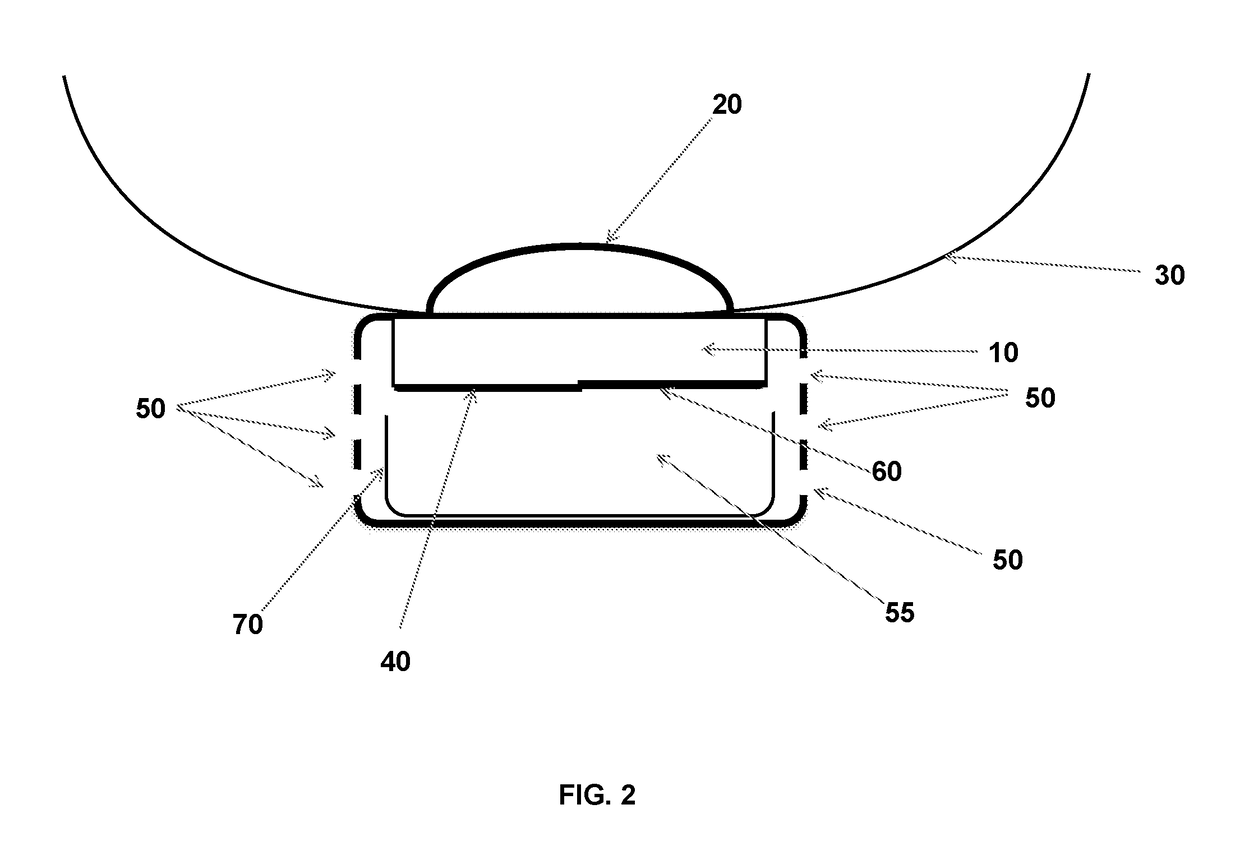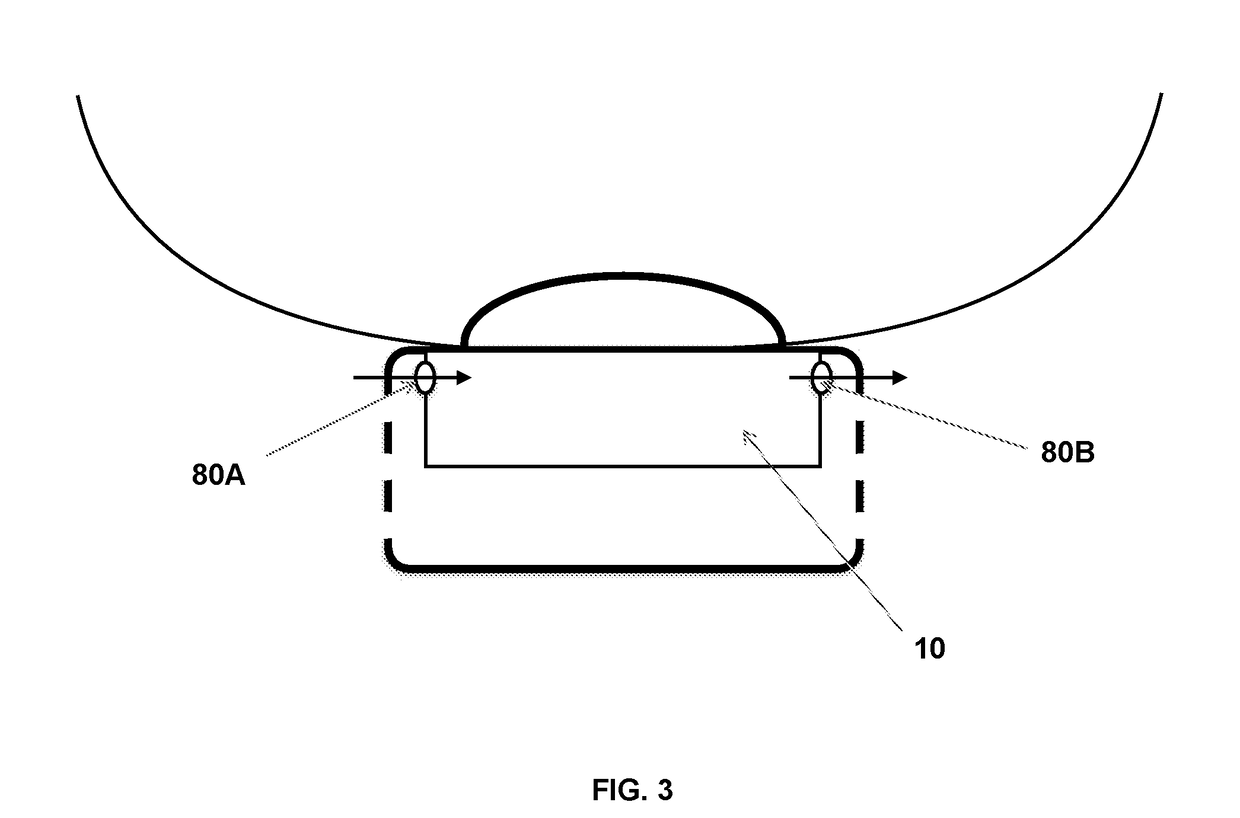Renewable energy-based atmospheric water generator
- Summary
- Abstract
- Description
- Claims
- Application Information
AI Technical Summary
Benefits of technology
Problems solved by technology
Method used
Image
Examples
Embodiment Construction
[0019]Referring now to the invention in more detail, FIG. 1 shows a frontal cross section of one embodiment of the atmospheric water generator. FIG. 1 demonstrates a fixed volume condensing air chamber 10, wherein the air inside the chamber is heated via a heat conductor 20 that is heated via a solar oven 30. The air temperature rises inside the fixed volume-condensing chamber 10. The inner surface 40 of the fixed volume condensing chamber 10 is cooled by a supply of wind flowing through openings 50 of the wind collection basin 55, causing the air to condense on the cooling surface 40.
[0020]As shown in FIG. 2, when a predetermined amount or weight of water is collected on the cooling surface 40, a trap door 60 swings open, thereby allowing the water to collect in a water collection basin 70 at the bottom of the wind collection basin 55 and the air supply in the fixed volume condensing chamber 10 to be renewed and available for heating again by the heat conductor 20.
[0021]Additionall...
PUM
| Property | Measurement | Unit |
|---|---|---|
| Angle | aaaaa | aaaaa |
| Weight | aaaaa | aaaaa |
| Pressure | aaaaa | aaaaa |
Abstract
Description
Claims
Application Information
 Login to View More
Login to View More - R&D
- Intellectual Property
- Life Sciences
- Materials
- Tech Scout
- Unparalleled Data Quality
- Higher Quality Content
- 60% Fewer Hallucinations
Browse by: Latest US Patents, China's latest patents, Technical Efficacy Thesaurus, Application Domain, Technology Topic, Popular Technical Reports.
© 2025 PatSnap. All rights reserved.Legal|Privacy policy|Modern Slavery Act Transparency Statement|Sitemap|About US| Contact US: help@patsnap.com



